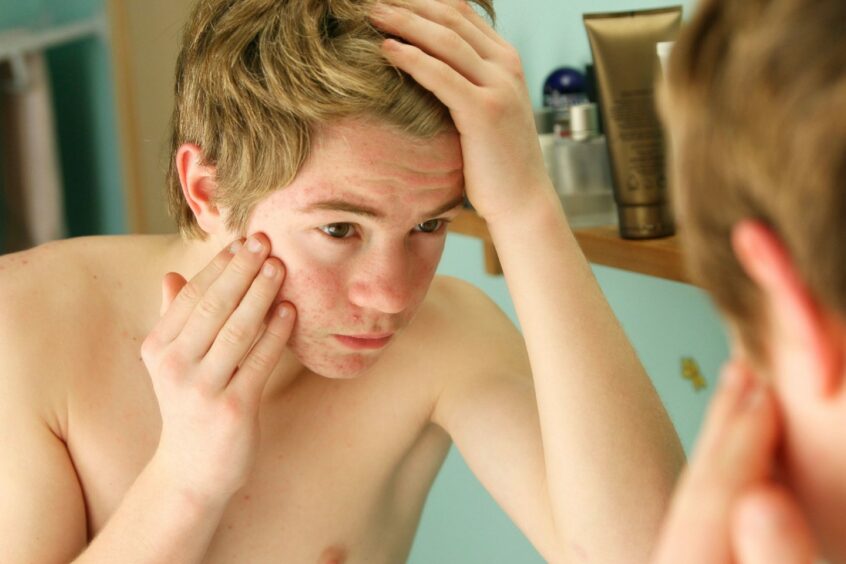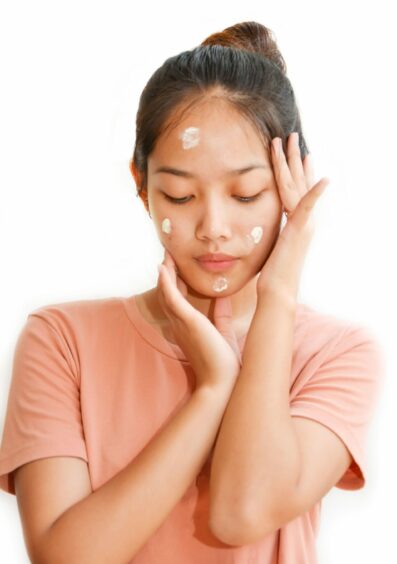Often occurring in tandem with rapid growth spurts, raging hormones and bodily changes, acne is a common side effect of going through puberty.
From blocked pores and blackheads to angry red or pus-filled zits, acne can range in severity, but why is it so common in the teenage years?
“Hormonal surges lead to increased oil production which, paired with the right bacteria and pores clogged with dead skin cells, can cause acne,” explains psychodermatologist Dr Alia Ahmed, who is currently working with The Body Shop.
Usually affecting the face, chest and back, spots can be painful and cause long-lasting skin damage such as pigmentation or scarring, as well as having a psychological effect.
“The emotional impact should not be underestimated, it can present as loss of confidence, low self-esteem, body image issues, lack of concentration and sleep,” Ahmed says.
“All of this stress can also drive inflammation, causing your teenager to enter into a vicious circle.”
We asked experts for their advice on practical and emotional ways parents can support a teenager who’s struggling with their skin.
Talk to your teen
“Being a teenager is hard enough, so dealing with added skin issues such as acne adds to the pressure,” says Dr Kemi Fab, junior doctor and Skin Proud consultant.
“I think normalising acne is key and explaining the reasoning behind it due to changes in hormones.”
Starting a conversation is the first step, but be careful not to gloss over the problem by saying things like, “It’s just a few spots” or, “It’ll go away eventually”.
“Although the sentiment is not meant to be harmful, teenagers can feel that their problem is trivialised, causing them to further retreat from asking for help,” Ahmed warns.
“It is more helpful to say ‘I can see this is bothering you, what can I do to help?’.”
Get the right skincare
The next step is to help your child find effective skincare products.
“Maybe suggest a trip to find skincare as their skin needs are changing as a teenager,” Ahmed says.
“Cleansers, non-comedogenic moisturisers and make-up, and serums can be helpful for acne. Ingredients to look for are salicylic acid, vitamin C, niacinamide, zinc and tea tree oil.”
Fab says that consistency is key and advises against heavily fragranced skincare or bar soaps: “Start to use products with entry level acne active ingredients but keep it super simple. Use an acne-specific cleanser that contains ingredients such as salicylic acid or benzoyl peroxide.”
Ahmed adds: “Discourage acne-aggravating habits like picking and over exfoliating, or the application of greasy products.”
Keep the conversation going
It can take up to 12 weeks before skincare products take effect. During that time, keep talking to your child about how they’re feeling.
“Take note of changes in behaviour, for example not maintaining eye contact, looking down or away whilst talking or using the hands to cover the face,” Ahmed says.
“Bullying is also common and teenagers will go to great lengths to avoid being made the subject of teasing. Is your teen taking time off school or reluctant to socialise?”
Try to be empathetic and encouraging, she continues: “If you have your own experience of acne, it might be worthwhile talking about this to show that you can relate to how your teenager is feeling.”
Consider medical help
“If a sustained skin routine is not helping – three months is a reasonable time to wait – or there is evidence of scarring on the skin, please consider seeing a healthcare professional to discuss medical treatment for acne,” Ahmed says.
Fab agrees that it’s better to speak to a GP sooner rather than later, especially if your teen has multiple areas of inflammatory acne. “By having this conversation as early as possible you can have your acne routine supported with prescription-based ingredients that will have a significant improvement on the skin,” she says.
Plus, a doctor’s appointment is the first step in getting a dermatologist referral and can help with mental wellbeing.
Fab adds: “GPs are also trained to support mental health issues that we know come alongside acne and can even refer on to a specialist.”





Conversation